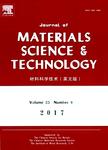Effects of Cl- Ions on the Corrosion Behaviour of Low Alloy Steel in Deaerated Bicarbonate Solutions
Effects of Cl^- Ions on the Corrosion Behaviour of Low Alloy Steel in Deaerated Bicarbonate Solutions作者机构:Institute of Metal Research Chinese Academy of Sciences Shenyang 110016 China Wuhan the Second Ship Design and Research Institute Wuhan 430064 China
出 版 物:《Journal of Materials Science & Technology》 (材料科学技术(英文版))
年 卷 期:2016年第32卷第4期
页 面:341-348页
核心收录:
学科分类:08[工学] 080502[工学-材料学] 0805[工学-材料科学与工程(可授工学、理学学位)]
主 题:Low alloy steelCorrosion behaviourCI Open circuit potentialElectrochemical impedance spectroscopy(EIS)
摘 要:The effect of Cl- ions on corrosion evolution of NiCu low alloy steel during immersion tests (up to 70 days) in deaerated 0.05 mol/L bicarbonate solutions was investigated by in-situ electrochemical mea- surements combined with X-ray diffraction (XRD), scanning electron microscopy (SEM) and electron probe microanalysis (EPMA) characterisations. The results showed that due to the acceleration of substrate dis- solution in the presence of Cl, corrosion of NiCu low alloy steel underwent only two stages, i.e., a quick oxidation process followed by a final metastable passive state, without the initial slow anodic dissolu- tion as observed in the Cl--free bicarbonate solution. The main components of the formed rust layer in the Cl--free bicarbonate solution were α-FeOOH and Fe3O4, while apart from α-FeOOH, Fe6(OH)12CO3 was found evident instead of Fe3O4 in the Cl-containing solution. Metastable pits were only found in the Cl-containing solution where Cl- accumulated after the immersion test, confirming the attack of Cl on the substrate after penetrating the formed corrosion product layer.



